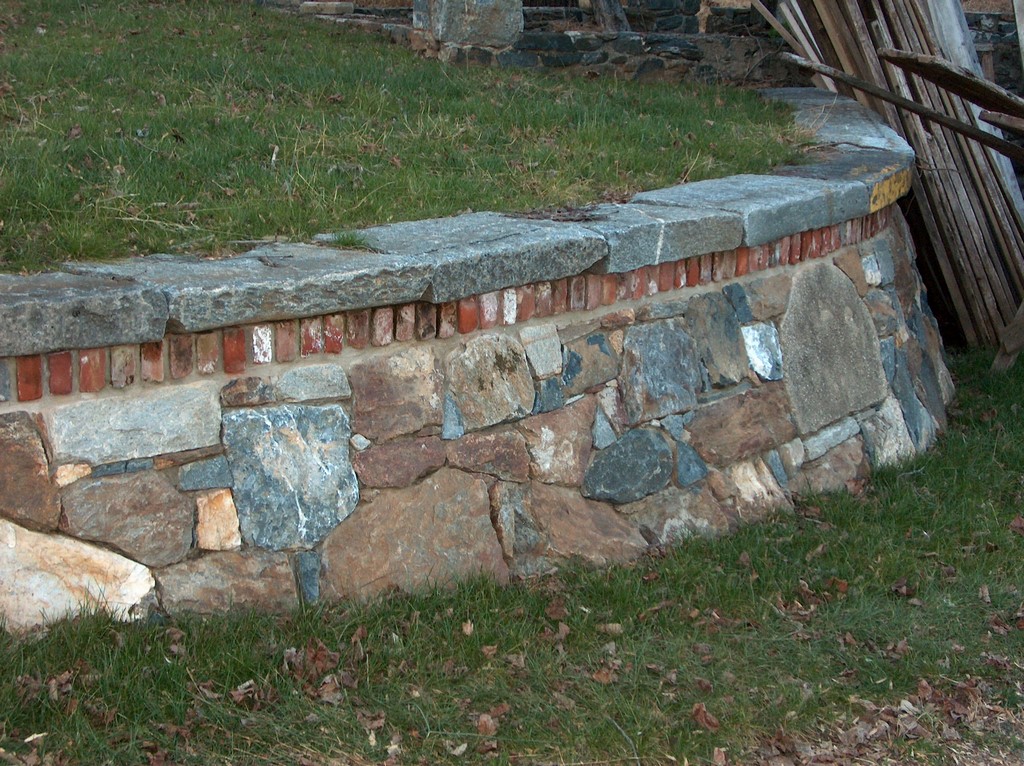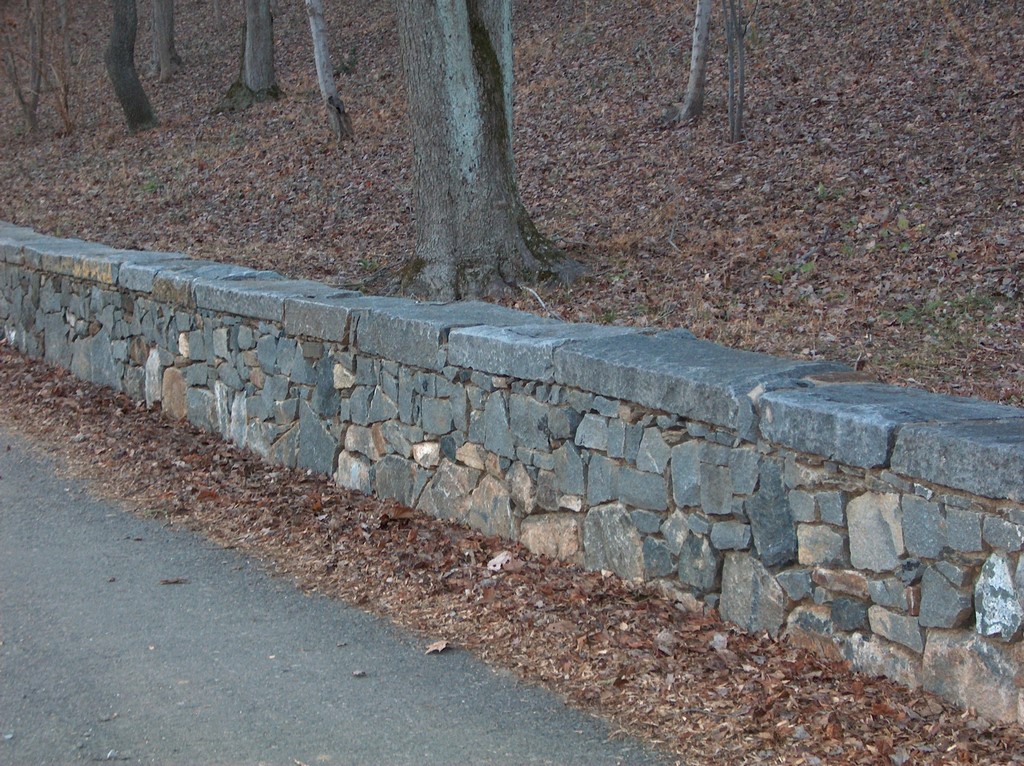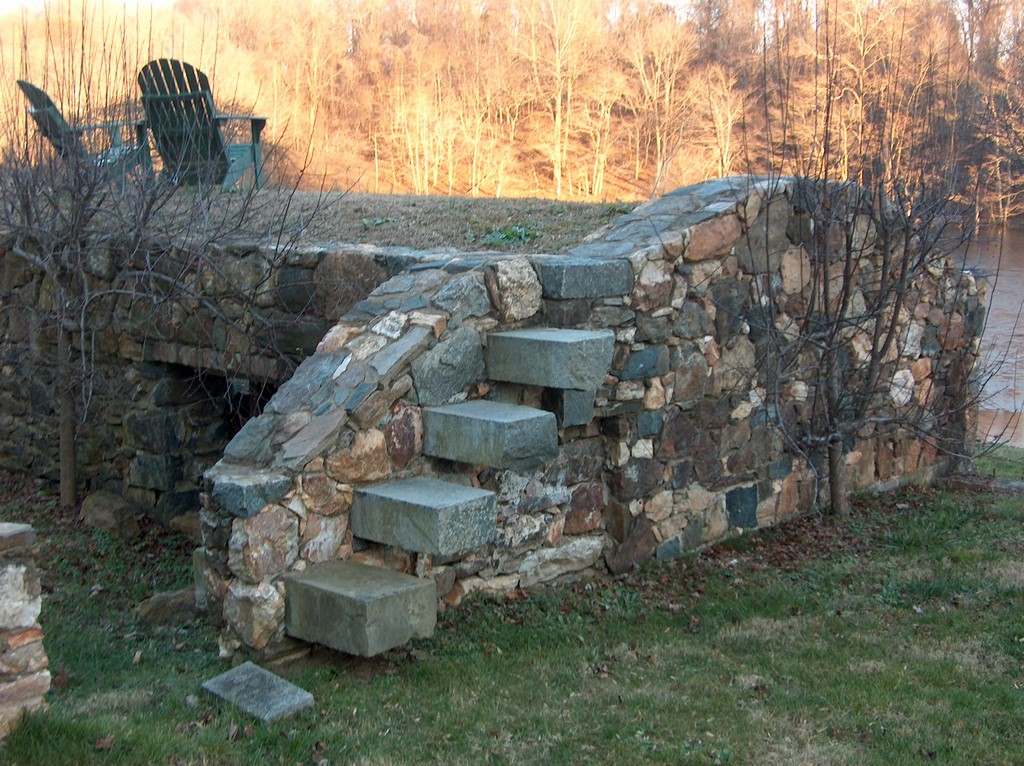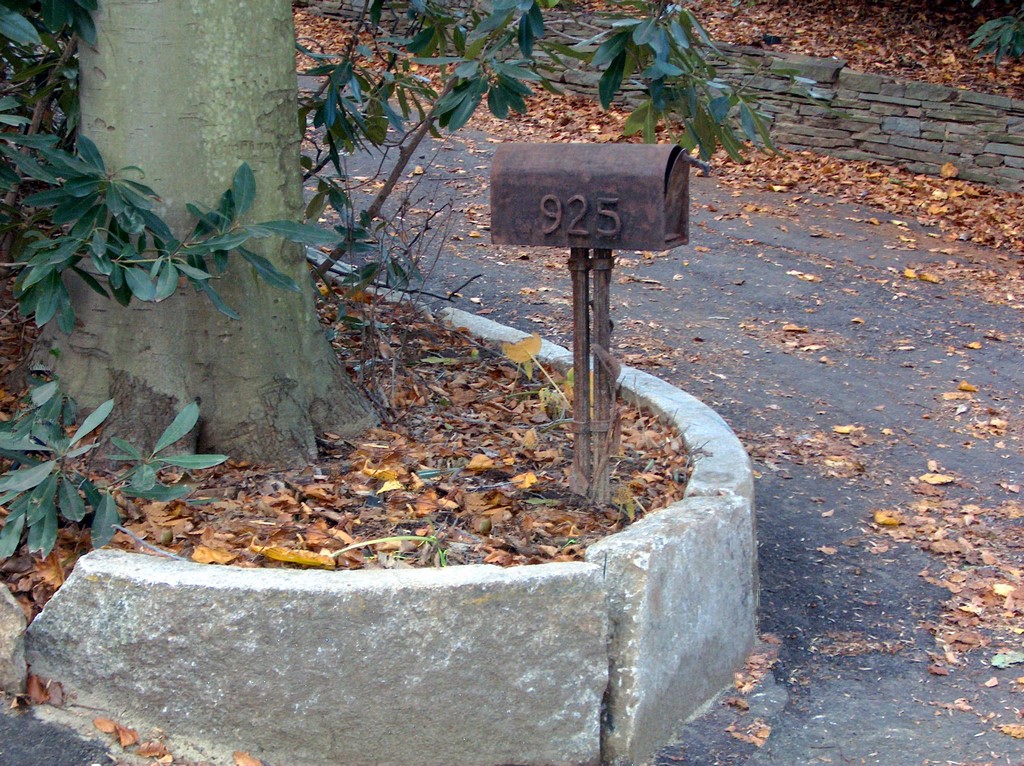Salvaged with Care

In recent years, more and more of our clients have asked us to use old hardscape materials on their projects: They love the stuff, they tell us, and they’re sold on its aesthetic richness, authenticity and time-tested visual appeal.
Living in southeastern Pennsylvania near some of the country’s oldest cities gives me the advantage of ready access to these timeless objects – mostly old cobbles, bricks and stone curbing pulled up in the process of infrastructure improvements being made in the hearts of historic town centers. Not only is the notion of recycling salvaged material good for the soul, but it also works: It lends a distinctive enhancement to new projects and satisfies clients’ desires to associate themselves with history.
Many of the properties and projects we at Outerspaces of Glen Mills, Pa., tackle are based on traditional designs patterned after historic structures. For many years, we noted with some dismay that reproductions of classic materials were seldom more than aimless copies of worthy originals and lacked warming touches that clearly associated them with historical precedents. By contrast, salvaged materials admirably fill the bill.
And their history can be long, as some of this salvaged material actually originated on the streets of Europe, where it was torn up in their rebuilding of town centers in the 18th and 19th centuries and loaded onto ships as ballast. This utilitarian weight was subsequently offloaded in ports up and down the Eastern Seaboard and supplemented by locally quarried schist and flagstone in making our early cities’ streets.
FINDING MATERIALS
Today, these materials are salvaged by the tri-axle-load in our local towns and cities as roads are widened and infrastructure is revamped for modern needs.
Whatever the origin, the materials we’ve found tend to be in the medium-gray range as a result of years of abuse from vehicle tires and environmental staining. Luckily, many doing the demolition work in our area know that there are several uses to which this material can be put, and they will contact contractors like us or distributors who are willing to buy the materials and stock them until a client shows interest.
| Figure 1 |
Tons of this material has ended up along the driveways and in the backyards and poolscapes of our area’s wealthiest residents. They see these beautifully worn materials as a good investment that will never go out of style (Figure 1, at left). They also know the same can’t be said of the concrete pavers we see going in by the square mile in local housing developments.
The word about this material has spread far enough, in fact, that some of our clients are asking us to come in and remove concrete pavers installed no more than five or ten years ago in favor of older, “genuine” materials. We then pay to have the pavers hauled away and crushed: There’s no secondary market for them despite the fact they were originally marketed as worthy imitations of old cobblestones.
We know of several architectural-salvage companies around the country that buy up old materials for resale to designers and contractors, but our preference is to deal directly with the demolition companies and paving contractors who are removing these materials on a regular basis.
The math is simple: If we were to buy from a salvage company, we could expect to pay at least as much as we would for comparably dimensioned new material and sometimes much more. By going straight to the contractors who know we want this material and taking it directly off their hands, we save them the trouble of handling it beyond placing it on our vehicles for transport to our storage yard. It works for them – and for us.
CREATIVE WAYS
Now that our interest in these materials is known, we regularly get calls from salvage operations offering us great deals on bricks or pavers that might otherwise have gone to landfill. And the fact that we’re close to areas where a lot of this demolition is happening helps keep our costs down as well.
| Figure 2 |
Gaining access to this material is easy if you live anywhere near a town with an old city center. Just keep and eye open for Main Street renovation projects in which old curbs, pavers and sidewalks are being replaced and speak up: If you have a place to stockpile the salvage, if it’s near a project and you make a reasonable offer to the demolition contractors, there’s a good chance they’ll work with you to save on their own trucking and dumping costs.
Once you have these objects in good supply, just carry manageable samples around with you when you meet clients to discuss materials selections – or, if the material’s too heavy, photographs will do. The point is, you have something unique, something that may even be of sentimental value to those who grew up in the source town, and your clients might be much more interested in owning pieces of history rather than the ordinary materials they’ll see from most everyone else.
And the applications aren’t limited to driveways, walls, poolscapes and deck areas, although those are obvious applications. We often use them, for example, in building stairways and as wall caps or quoins (Figure 2, above). Old granite curbing in particular is a useful building material: It generally has a rectangular shape with soft, worn edges caused by generations of drivers who parallel park as poorly as I do and works beautifully within a variety of architectural and design styles and in a healthy range of configurations.
| Figures 3A and 3B |
In the project seen in Figures 3A and 3B, for example, we created an amphitheater from salvaged material by carving stepped, concentric plateaus in the side of a large hill on the back of a property. (The displaced soil was cast uphill to create a flat, three-quarter-acre event lawn off the back of the house.) All the steps and the ring that defines the amphitheater floor are from a Philadelphia street-and-sidewalk project in which old curbs and sidewalks were being replaced by concrete curbing and walkways.
PRACTICALITIES
We obtained the material for less than the cost of new-cut stone or even interlocking concrete blocks, and it worked wonderfully with the simple design of the amphitheater and within the context of the other stonework around the property. And because of their considerable mass (most of the blocks weigh 400 pounds or more), they don’t move when people walk on them.
Installing materials for the amphitheater involved the same processes we observe with other masonry materials: We were careful to set them in a soil bed with some Portland cement mixed in to prevent the setting bed from migrating down the hill over time – but this is standard procedure in preventing movement.
| Figure 4 |
The broken ends of the curbing – that is, pieces that weren’t big enough to fit in as stairs – were used to define the outside edge of the floor of the amphitheater and visually serve to reinforce the circular design of the space. These blocks are still large enough that they will stay in place on their own and certainly won’t pop out if they take a shot from the mowing crew.
For their part, old curved pieces of curbing fit together nicely enough to create a tight radius around the mailbox at the end of a driveway (Figure 4, just above). By setting the stones in a trench filled with concrete, we created an inexpensive, low retaining wall that will not move even if a trash truck backs into it.
My recommendation: As you drive around, keep an eye out for demolition and infrastructure work in older areas: You might just find great materials that will set your offerings apart from those limited to the cookie-cutter materials that seem to be overtaking the marketplace.
I guarantee you will feel good knowing you saved these wonderful old materials and given them a home where they’ll be enjoyed for another century or two.
Robert Nonemaker is co-owner of Outerspaces Inc., a design/build firm based in Glen Mills, Pa., that specializes in large, complex residential landscape, pool and fountain projects typically costing $1 million and up. He also owns Robert Nonemaker Exterior Design, a firm that offers design- and construction-consulting services to architects and landscape architects throughout the country.















